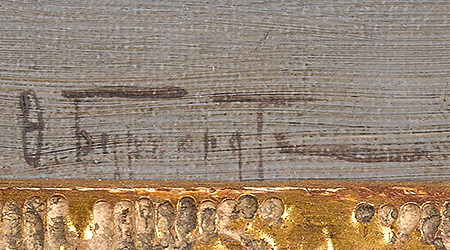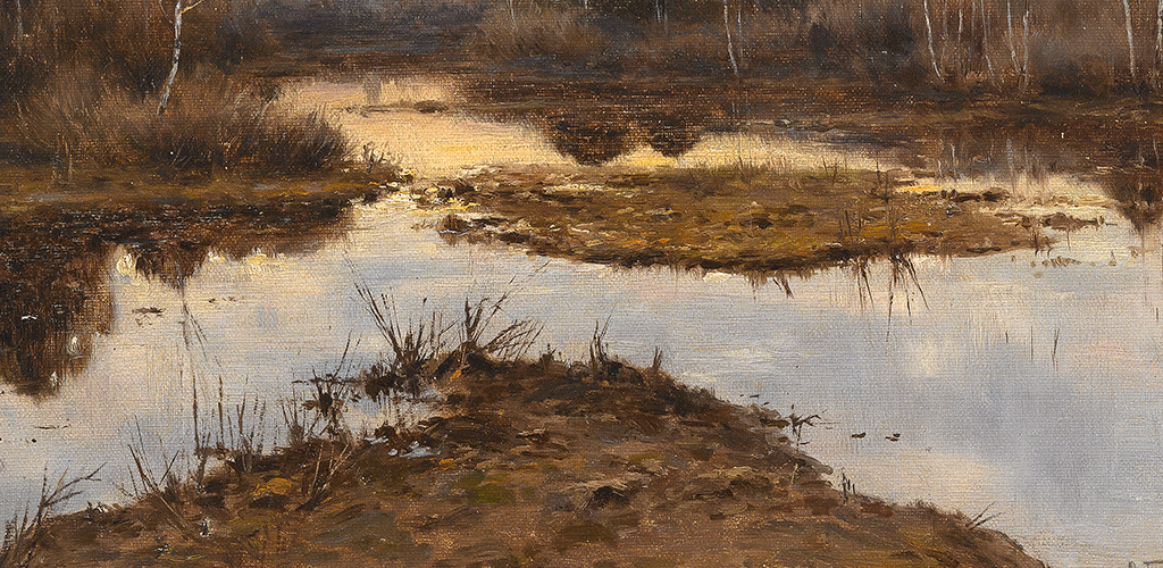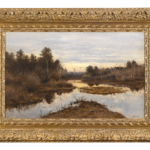Fedor Karlovich Burkhardt was an acclaimed master of the XIX century Russian lyrical landscape. Spring Landscape is a fine example of the artist’s mature style, which is typified by its appreciation of serene rural landscapes and bodies of water. The painting’s composition is highly characteristic of the artist’s work, in which the surfaces of rivers and lakes are brought into reflective harmony with expansive, cloud-filled skies.
Spring Landscape demonstrates the artist’s mastery of the ‘mood landscape’: a genre that celebrated the serenity and grandeur of the Russian rural scene and sought to capture its fleeting shifts in weather and light. Like his contemporaries Isaac Levitan and Aleksey Savrasov, Burkhardt was a remarkably talented painter. As the Russian art critic Alexandre Benois wrote in 1916, two years before Burkhardt’s death, the painter captured ‘the inexplicable charm of our humble poverty, the shoreless breadth of our virginal expanses, the festal sadness of the Russian autumn, and the enigmatic call of the Russian spring’.
Only a small number of Burkhardt’s works survived. The details of his biography are scant. Burkhardt was born in 1854 in St.Petersburg into an aristocratic family. From 1889 to 1913, he was an exhibitor at the St.Petersburg Society of Artists and the Moscow Society of Art Lovers.
Burkhardt applied to his paintings a highly sophisticated, realist technique, using fine brushwork to emphasise precision and detail. At the same time, he captured on the canvas a degree of emotional sensitivity more often associated with the Impressionists.
His work continues to be popular among discerning collectors.













